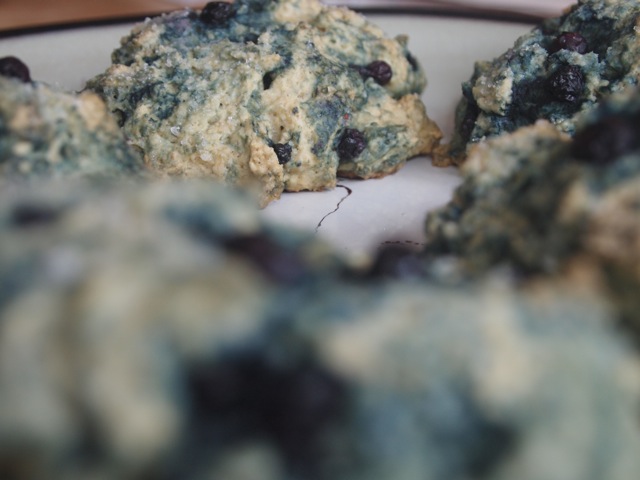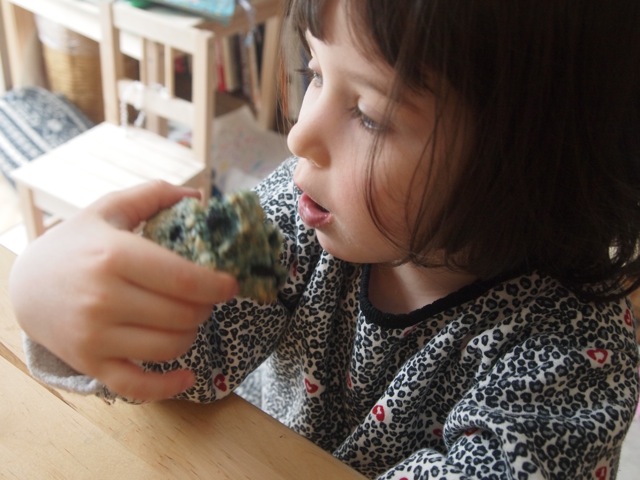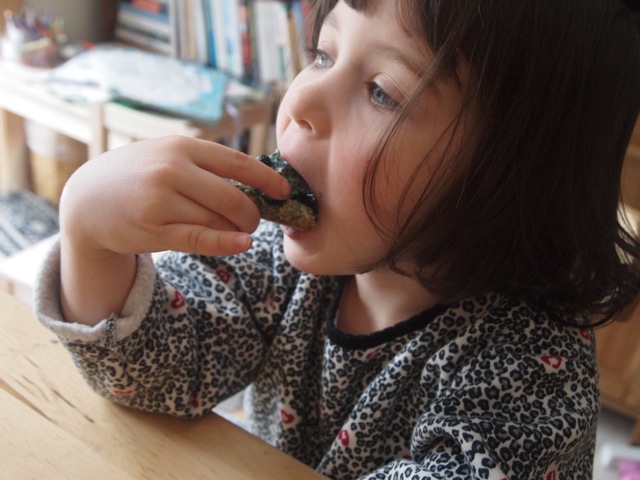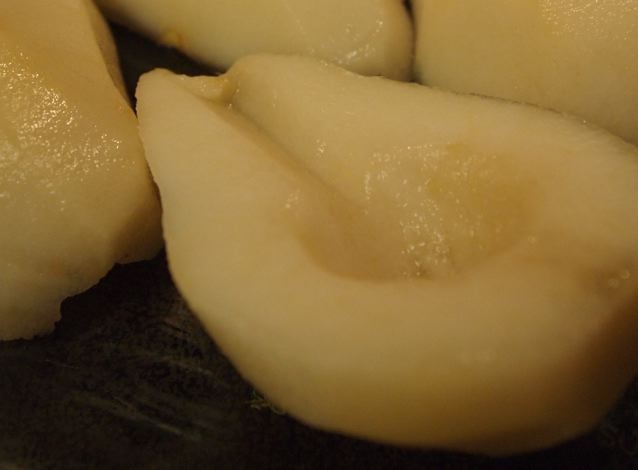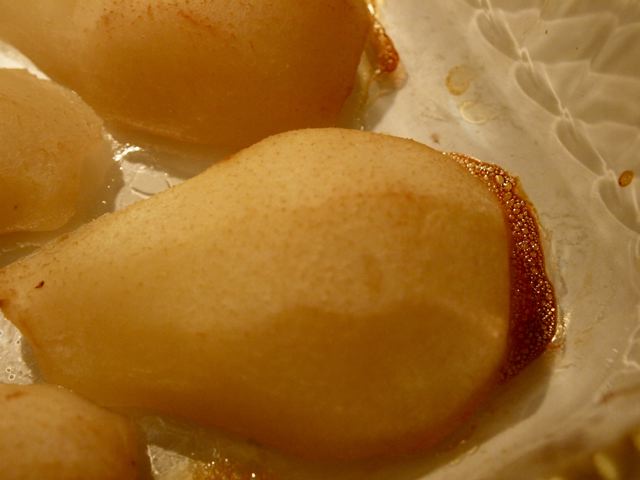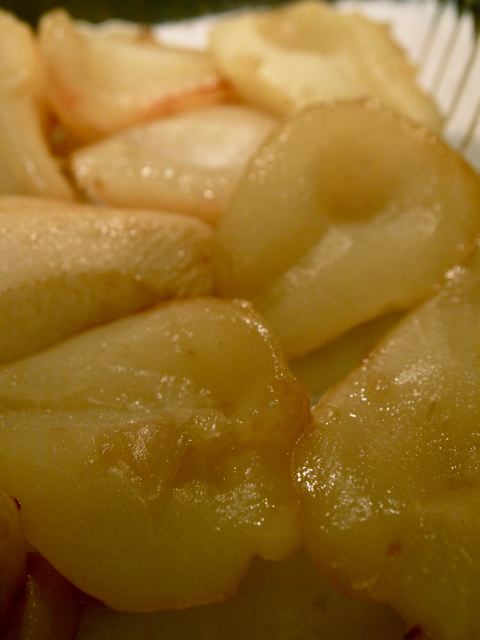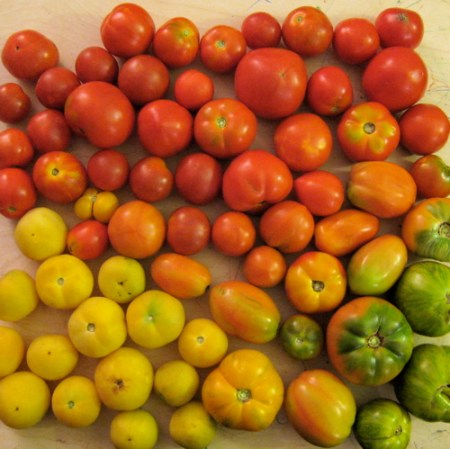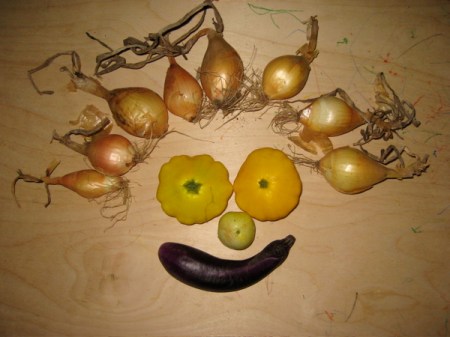Having just posted pictures of artichokes two days in a row, I might as well go one further. In fact, I might as well come right out and confess: I love artichokes. My list of 40 things I like would be incomplete if I did not include artichokes.
I don’t remember the first time I tried an artichoke. I was born in California, where artichokes grow on trees. Well, not really. They grow from the ground in big spiky plants. (They are thistles, and the part you eat is a flower bud.) But in California, they do at least grow. And so it was that I got to have them on occasion. I loved them. They weren’t just my favorite vegetable, they were my favorite food. (You may recall my anecdote about being featured in a class newspaper under the headline “Girl Likes Artichokes.”)
I’m not terribly fond of marinated artichokes. They are okay, but not at all in the same league as fresh artichokes. My favorite way to have artichokes is steamed, accompanied by a small bowl of melted butter for dipping. (I’m even appending my own instructions.)
I can’t say what it is about artichokes that I love so much. I know what it is, but I’m not going to say. (No, not really.) They are just ineffably yummy.
Some people don’t understand the appeal of eating a vegetable that is so much work. (In case you’ve never eaten a fresh artichoke, the typical way to eat one is to peel off the leaves one by one, and scrape the small tender bit at the base of each leaf with your teeth.)
For me, the process is part of the appeal. You start of by eating the outer leaves, which are typically a bit tougher, and work your way in to the more tender and flavorful ones. Then you pick up speed, as the leaves get soft enough to bite through. Then you pluck off the ring of spiky inner leaves, and then scrape out the hairy choke with the utensil of your preference, finally reavealing the heart, which is worth all the trouble. I cut it up and roll the pieces around in whatever’s left of my little bowl of melted butter after I’ve dipped each leaf. Then I try to eat it as slowly as I can, because it is always over too quickly.
How I cook artichokes:
- Wash the artichokes
- Cut the stem close to the bottom of the artichoke. The stem, while close to the heart, is usually pretty tough and fibrous.
- Trim the spikes. I use a combination of a knife and kitchen scissors. With the knife, I saw through the tightly bunched tops of the artichoke leaves. With the scissors, I go around to the outer leaves and snip off the tips. Cutting the spikes off is not necessary, but may prevent bloodshed during dinner.
- Steam in a covered pan. I use one of those metal steamers that has sort of petal-like bits. I place the artichokes with the stem side down.
- To start, I fill the pan with water to just about the bottom of the steamer surface. Typically, I have to add water before the artichokes are finished. (It is not uncommon for the water to boil away.)
- The amount of time it takes to steam depends on the size of the artichoke. For a big artichoke, about 40 minutes is probably typical. I’ve had small artichokes take more like 20 minutes.
- You can tell that they are done by pulling at the leaves with some tongs. If a leaf come out easily, it is proabably done, but you should probably test it to be sure. You can also try poking at the bottom of the artichoke with a fork, but this involves lifting out the artichoke, which can be tricky.
- Serve with the dipping sauce of your choice. I vote butter.
- Share your artichokes with me.
A note of warning: whatever you do, wash your hands after you handle a raw artichoke. The residue is extremely bitter. If you, say, lick your fingers, you will get a nasty shock. On the other hand, some people may like this bitterness. I once bought a bottle of Cynar, the liqueur flavored with artichoke. I was curious, naturally. I can safely say that it was one of the nastiest tasting beverages I’ve ever tried. It tasted like licking a raw artichoke. (Not that I’ve ever done that.)
This post is the second in my generally unordered series of 40 posts about things I like.






